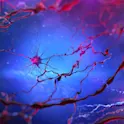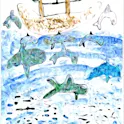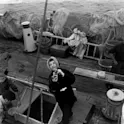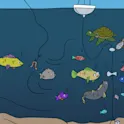
Young Minds
18 Mar 2022
Carl Wilhelm Scheele – The Forgotten Chemist
We invite you to read the compelling story of Carl Wilhelm Scheele – the forgotten chemist.

Young Minds
18 Mar 2022
We invite you to read the compelling story of Carl Wilhelm Scheele – the forgotten chemist.

Young Minds
01 Mar 2022
We invite you to explore our free, kids oriented science journal- we just achieved 15 million article views!

Frontiers news
25 Jan 2022
The Dubai Expo to see young scientific minds review real research, live on stage

Featured news
05 Nov 2021
Image: Corona Borealis Studio/Shutterstock.com Have you ever asked yourself what is it in our brains that actually helps us navigate in the world? Helping us answer that question, Prof May-Britt Moser won the Nobel Prize in Physiology or Medicine in 2014 for the discovery of cells that constitute a positioning system in the brain. When you think about navigation, what is the first thing that comes to mind? Is it the well-known GPS system in your cellphone? An underwater journey of a submarine to its destination? Or perhaps a team assignment in the scouts, to find your way back to the camp at night? Would you be surprised to know that our brains have a built-in navigation system responsible for representing our location in the environment and for orienting us so that we can successfully get from one place to another? This mental representation of the environment is often called a cognitive map and was the focus on a Nobel prize-winning paper published by Prof May-Britt Moser. ► Read and download (pdf) of original article While navigation in the environment appears seamless and automatic, the brain’s navigation system is actually quite complex, composed of several brain regions and various cells types. […]

Young Minds
05 Oct 2021
Last week, Frontiers for Young Minds took active participation in the five-day online OE Global Conference which focused on the connection of open education to the UNESCO Open Educational Resources (OER) Recommendation.

Young Minds
11 Aug 2021
We invite you to read the compelling story of one of the founders of modern neuroscience: Marian Diamond.

Young Minds
08 Jul 2021
We have recently achieved a super exciting milestone – we have now reached 10 million article views!

Featured news
31 May 2021
Arabic speakers worldwide can now access a library of kid-friendly scientific articles thanks to a newly launched educational resource.

Young Minds
12 Feb 2021
What is Darwin Day? Why is it important? Scientists of the University of South Florida help to explain!

Young Minds
02 Dec 2020
We invite you to read the compelling (forgotten) story of the first female oceanographer: Anita Conti.

Young Minds
08 Jun 2020
How can young people get involved in celebrating, researching and protecting our oceans on World Oceans Day?

Young Minds
28 Apr 2020
Our Collection editors invite scientists and kids to help them fight misconceptions about soil.

Young Minds
06 Apr 2020
As schools across the world close during the Coronavirus pandemic, how will young people continue to learn?

Frontiers news
01 Apr 2020
As governments worldwide announce school closures in response to the COVID-19 outbreak, it is important parents and teachers seek out fresh and pioneering new ways to keep young minds learning and stimulated during months of restricted movement ahead. Frontiers for Young Minds is an open-access journal written by some of the world’s foremost scientists, specifically for young people.

Young Minds
16 Mar 2020
“I asked kids why they thought peer review would be important. They said: ‘because someone can lie, because they want to be famous.’”
Get the latest research updates, subscribe to our newsletter